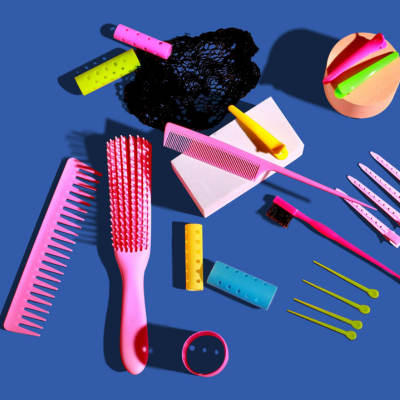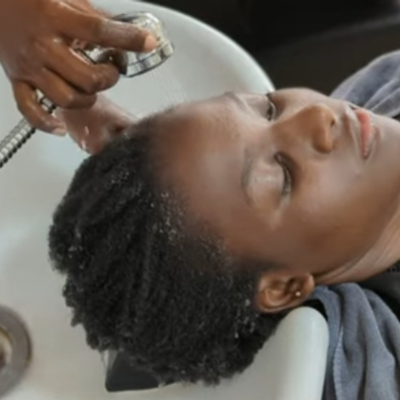- Support 24/7
- +1 (480) 468-4543
- livara@mylivara.com
Genetics Police: Hair Growth Depends on Other Factors Too
Common Mistakes To Avoid When Styling 4C Hair
December 15, 2023Having a Hard Time With Shrinkage? Here Are The Best Ways to Stretch Your Hair
December 17, 2023When someone with long, healthy, and lustrous hair is seen online, it’s quickly assumed that they have “good hair genes.” People constantly wish they had the genes of the hair influencers they follow on TikTok, Instagram, and YouTube, but they don’t realise that most of the time, their long hair comes from consistent and proper haircare regimens. Even though heredity does play a significant influence, there’s much more to the story. In this article, we’ll explore the factors that contribute to healthy hair growth beyond the genetic code.
Haircare Practices Matter
Your success in reaching your desired hair length is largely determined by your haircare routine. If you want your hair to be as long as you want it to be, you need to follow some basic principles even though it’s important to avoid overdoing it. You won’t have strong hair that is resistant to breaking without these general haircare and length retention practices.
Breakage is the biggest enemy of growth. Your chances of noticing any growth are reduced the more often your hair breaks, giving the impression that your hair is not growing at all when in reality it is. The following hair care techniques can help avoid this:
Moisture for Healthy Hair
Due to its direct effect on the health of the scalp and hair strands, hydration is essential for healthy hair growth. Here’s why you adequate moisture is essential for achieving hair length goals:
- Moisture for Hair Elasticity
Well-hydrated hair is more elastic and less prone to breakage. Adequate moisture content in the hair shaft allows it to stretch without snapping, reducing the risk of damage during activities like combing or styling.
- Prevention of Dryness and Brittle Hair
Lack of hydration can lead to dry and brittle hair. When the hair is deprived of moisture, it becomes more susceptible to splitting and breakage, hindering overall length retention and growth.
- Healthy Scalp Environment
A hydrated scalp is essential for a healthy hair growth environment. Having a dry scalp can lead to a dry, flaky scalp, potentially causing issues such as dandruff. A well-moisturized scalp promotes the perfect conditions for hair follicles to thrive.
How to Properly Moisturize Hair to Encourage Growth
1. LOC/LCO Methods
Experts and a number of haircare enthusiasts agree that methods like the LOC (Liquid, Oil, Cream) or LCO (Liquid, Cream, Oil) contribute to effective moisture retention.
The liquid can be water or a water-based moisturizer like our Tsavorite Spritz Moisturizer. Simply spritz some of it onto your hair and scalp and apply a natural oil of your choice like rosemary, avocado, jojoba or castor oils. A cream like a hair butter can help to retain moisture better, especially for those with high porosity hair.
Take care not to apply these products to dirty hair or hair with buildup as the products will just sit at the top and not absorb properly. Cleanse your hair with a sulfate-free shampoo every 1-3 weeks (depending on your individual hair state and needs). Follow up with a rinse-out or leave-in conditioner to revive moisture after cleansing.
2. Deep Conditioning
Arguably the most important step in any haircare routine, another important way to incorporate moisture is through deep conditioning. It typically involves using a thick, concentrated conditioner or hair mask, leaving it on for an extended period, usually 20-30 minutes, and rinsing it off. Product absorption into the hair is usually enhanced by wearing a plastic cap or sitting under a hair dryer to generate heat.
This simple practice when done at least once every 1-2 weeks, or whenever you take out your protective style, improves overall hair texture, prevents hair breakage and promotes hair growth.
Gentle Detangling
How you treat knots and tangles in your hair will have a big impact on how much length you can keep. Harsh detangling techniques, such as aggressive combing, increase the risk of breakage, while gentler techniques, such as finger detangling, lessen the risk of breakage and scalp pain.
Never detangle dry hair. Ensure that you moisturize your hair with some water followed by a natural oil, or a water-based moisturizer with humectants like glycerin to attract moisture to the hair and scalp. These products add slip to the hair, preventing chances of hair breakage as you detangle.
Additionally, make sure to use a wide toothed comb for detangling. Opt for a metallic, plastic or wooden Afro pick with wide teeth to prevent breakage that comes with using small combs.
Protective Styling
Embrace protective hairstyles that minimize manipulation and reduce exposure to environmental stressors like dust or dry conditions. Styles like braids, twists, and cornrows can help protect the ends of your hair and prevent breakage. Just ensure not to make these styles too tight, as it can lead to additional stress on the hair, leading to hair loss along the hairline.
Avoiding Heat Damage
Excessive use of heat styling tools can lead to weakened hair shafts and breakage. If you must use heat, apply a heat protectant, and use the lowest effective temperature. Consider embracing natural hair stretching techniques like Bantu knots, twists or braids in your own hair to minimize reliance on heat styling.
Silk Pillowcases or Satin Bonnets
By now, we’re all too familiar with wearing a bonnet to sleep or resting our heads against a silk pillowcase. This simple haircare practice prevents breakage from the friction that’s usually generated between the hair and beddings. These fabrics prevent that friction in addition to encouraging moisture retention as you sleep.
Balanced Diet
Your diet directly influences the health of your hair. Essential nutrients like vitamins A, C, D, and E, along with minerals like iron and zinc, significantly impact the strength and growth of your hair.
To maximize the benefits of these nutrients for your hair, incorporate foods like sweet potatoes (vitamin A), eggs (biotin and protein), citrus fruits (vitamin C), lean meats like chicken, beef, fish (protein and zinc) as well as beans and lentils (iron, zinc and copper).
Trimming Split Ends
Counterintuitive as it may sound, trimming the ends of your hair when you notice split ends encourages healthy hair growth. Removing split ends prevents them from traveling up the hair shaft, preserving length and preventing further damage. Schedule a trim at a salon if you notice the ends of your hair beginning to fray into two.
Bottomline
In the quest for long hair, it’s essential to recognize that genetics is just one piece of the puzzle. By adopting the right haircare practices like moisturizing, adequate cleansing, gentle detangling, protective styling, avoiding heat damage, sleeping on a silk pillowcase or with a satin bonnet and adopting a nutrient, you can positively influence the length and health of your hair. So, go ahead and unlock the secrets to flourishing hair beyond what your genes dictate.



